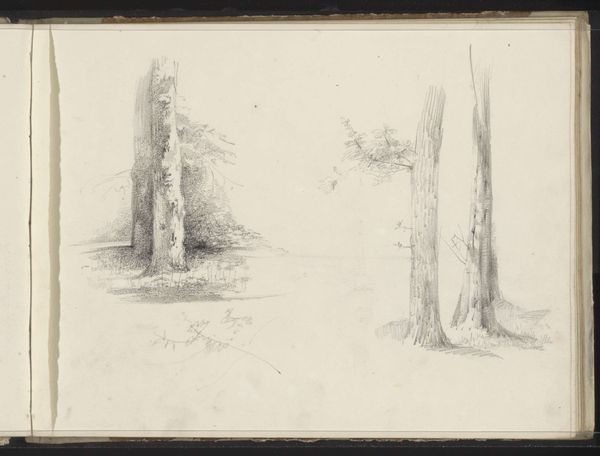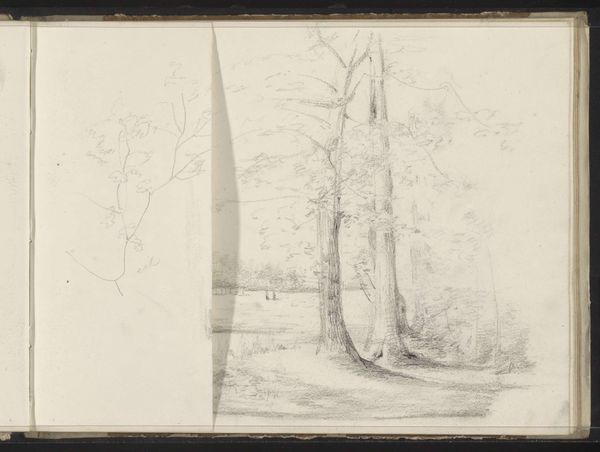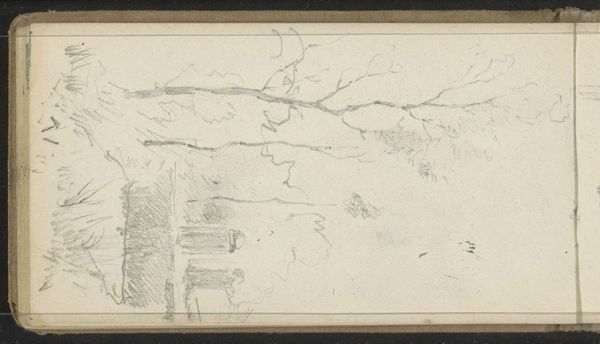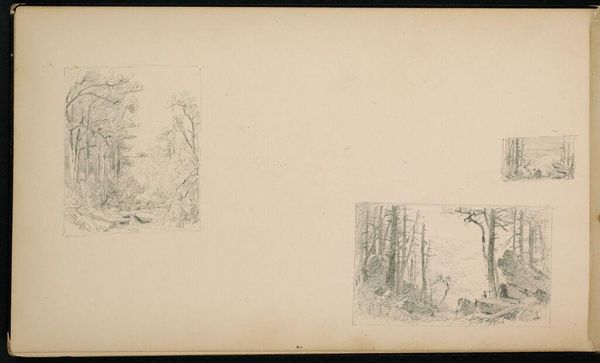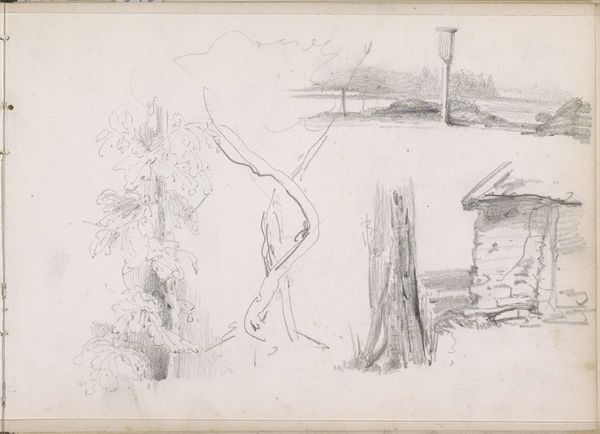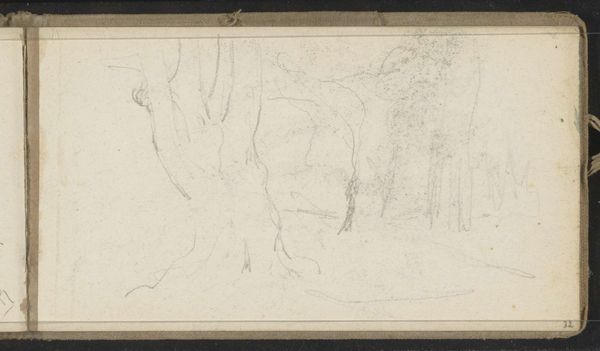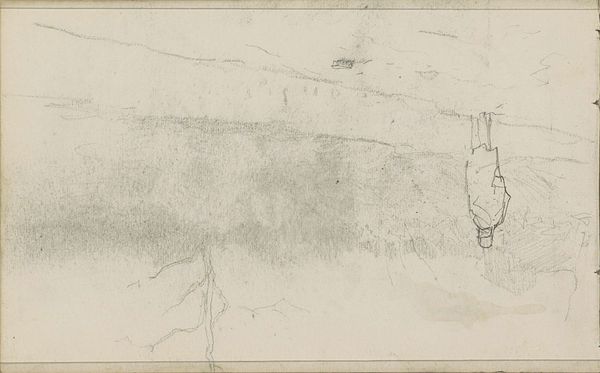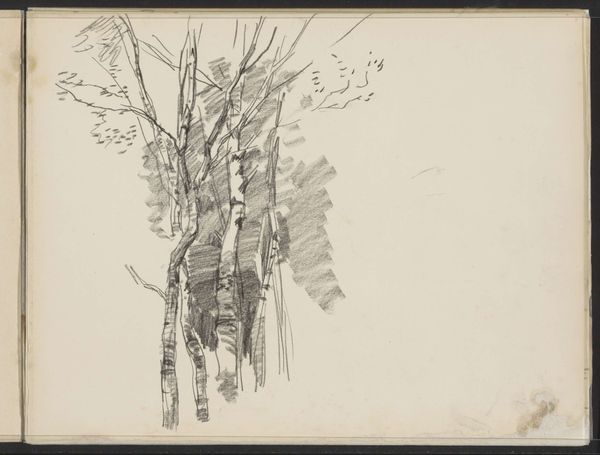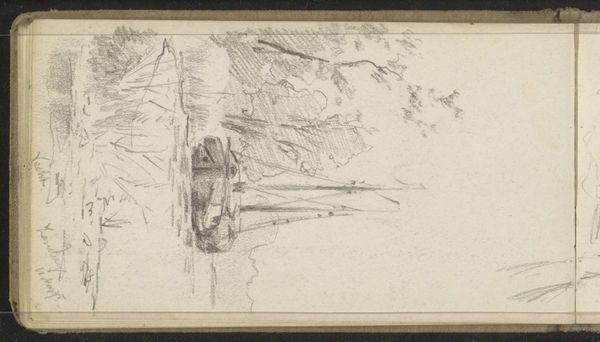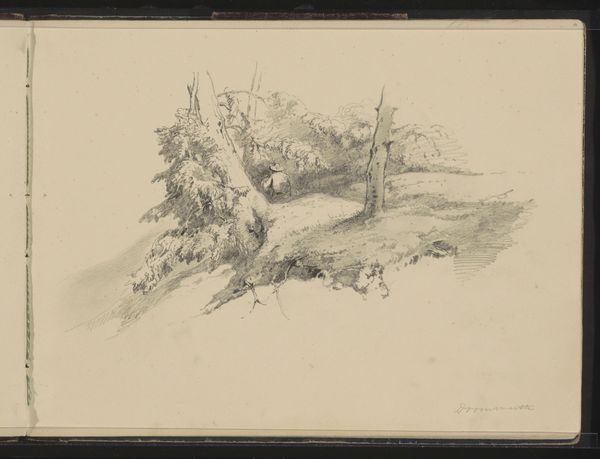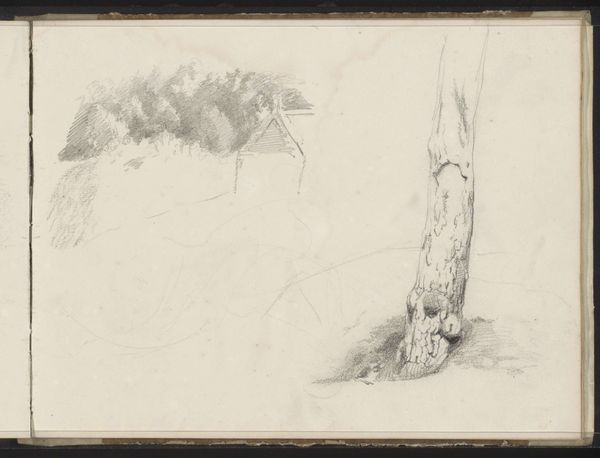
drawing, paper, pencil
#
drawing
#
landscape
#
paper
#
pencil
#
realism
Copyright: Rijks Museum: Open Domain
Curator: Here at the Rijksmuseum, we have a delicate pencil drawing titled "Bospad," by Maria Vos. The piece, undated but created sometime between 1834 and 1906, presents a path through a wooded area. Editor: It's wonderfully understated. Looking at the varying pencil strokes on paper, I get a definite feeling of transience. The trees almost seem to dissolve into the mist, which seems fitting considering the piece is of indeterminate creation. Curator: Precisely! Vos was working in a period where realism was emerging, but there's still a strong emphasis here on capturing a specific mood, more so than scientific accuracy. Remember that landscape painting was evolving as society shifted, connecting art with ideas of national identity and nature as something more than just resources. Editor: Yes, and how was the availability of her materials impacting her work? The paper looks like it may be from a sketchbook. Was sketching viewed as merely preparatory at the time, a practice removed from final works, or were these images deemed significant in and of themselves? I wonder what type of pencil she used and if it would have been readily available. These choices affect her final result and impact our experience as viewers. Curator: An excellent question, because it certainly forces us to consider how the academy perceived sketches as less formal expressions of an artist's sentiments at that time. This was long before photography became readily available, so in many ways the work preserves not only a place but a moment. The woods weren't yet a full-blown theme park of the 20th century; these kinds of untouched spaces held very different symbolic meaning. Editor: Thinking of its social and environmental position definitely shapes how I view this piece. It's a reminder of a specific moment with a set of particular materials, an index of labor made visible by time. It makes you think about Vos making the artwork and all her motivations as an artist in this period. Curator: Absolutely, the act of sketching in "Bospad" is a reminder that art always carries echoes of societal values that we continue to interpret today. Editor: So well said; a quiet piece can certainly tell a richer story than we anticipate at first sight.
Comments
No comments
Be the first to comment and join the conversation on the ultimate creative platform.
